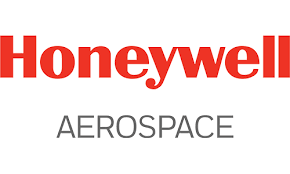HONEYWELL TECHNOLOGIES INCLUDING TOUCHSCREEN COCKPITS TAKE TO THE SKIES IN GULFSTREAM’S NEWEST CERTIFIED AIRCRAFT
![]()

Newly certified G500 features touchscreen cockpit technology and enhanced mechanical systems for a safer, more comfortable passenger experience
PHOENIX, July 20, 2018 – Proven cockpit technologies and advanced mechanical products from Honeywell Aerospace (NYSE: HON) are core systems of Gulfstream Aerospace Corporation’s new G500 aircraft, which received certification today. The new model optimizes speed, wide-cabin comfort and efficiency to offer customers exceptional performance and comfort along with advanced safety features.
“The G500 represents a perfect blend of technological sophistication and passenger comfort, and the certification of it is an exciting industry milestone,” said Carl Esposito, president, Electronic Solutions, Honeywell Aerospace. “From consumer-like touch functionality in the cockpit, a highly advanced synthetic vision cockpit system, and mechanical systems that reduce weight and increase flight efficiency, we are proud to have provided and collaborated with Gulfstream on many of the technologies that will deliver customers, pilots and passengers the best flight experience possible.”
Honeywell Brings Modern Touch to the Cockpit
The aircraft will be the first to feature Honeywell’s new touchscreen technology in Gulfstream’s new SymmetryTM flight deck. Aimed at making displays more intuitive, integrated and significantly more user friendly for pilots, Honeywell’s new touch capabilities will ease workload and improve communications in the cockpit. The integrated touchscreens will be used for system controls, flight management, communications, checklists, and monitoring weather and flight information.
Honeywell Advanced Avionics and Mechanical Products on the G500:
- Honeywell’s SmartView Synthetic Vision System. SmartView significantly improves the flight crew’s situational awareness by providing a large, 3-D color synthetic image of the outside world to enhance safety and efficiency.
- Touchscreen controllers. Using an 8-inch diagonal liquid-crystal display, the touchscreen controllers are fully integrated with cockpit and aircraft systems, providing advanced functionality from flight planning and audio control to checklist and aircraft systems control, as well as the capability to expand.
- 2-D and 3-D airport moving maps. The 2-D moving map shows runways, taxiways, airport structures and signs at many airports on the cockpit navigation displays, while the 3-D moving map integrates the synthetic vision system for an “out the window” view of the airport on the Primary Flight Display.
- Cockpit display of traffic information. This presents the position of nearby aircraft equipped with Automated Dependent Surveillance-Broadcast transponders on the flight deck multifunction display, giving the flight crew better awareness and understanding of airborne and surface traffic.
- HGT400[G] auxiliary power unit (APU). This integrated system supplies pneumatic and electric power for the aircraft while on the ground or in flight. Honeywell’s newest large-cabin business aviation APU is derived from a successful lineage of the proven RE220 APU. The system is approximately 30 pounds lighter than the average APU in its class with industry-leading technological advancements to maximize performance and reliability. The HGT400[G] is also equipped with Honeywell’s latest electronic controller technology, allowing for smooth communication with the integrated flight deck.
- Environmental control system and cabin pressure control system. These integrated systems provide a more comfortable, quieter experience for passengers by minimizing changes in the cabin environment and reducing workload for the crew.
Supporting Resources
Daphné Savard occupe le poste d’administratrice du site ou webmestre ainsi que celui de responsable des relations avec les annonceurs et les lecteurs.

Commentaires